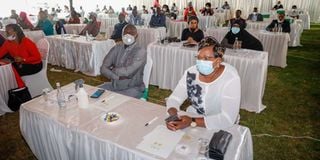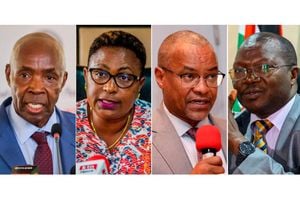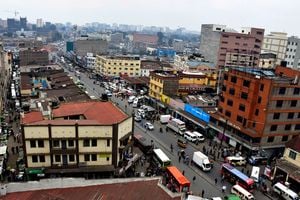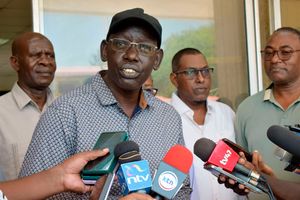Rift Valley to take lion’s share of new seats if referendum passed

Delegates follow proceedings during the meeting to discuss and build consensus on the implementation road map of the BBI report.
Rift Valley will be the biggest beneficiary of the extra 70 special seats to be created in the National Assembly should the Building Bridges Initiative (BBI) constitutional amendments pass.
Already, with 76 seats in the House, the region is poised to get an extra 19 in the proposed constitutional changes, which will increase its tally to 95 seats — nearly a third of the House membership.
This number is critical to influence the appointment of a Prime Minister should the Constitution be amended. BBI has proposed a 360-member National Assembly composed of elected representatives of each of the 290 constituencies and the 70 MPs drawn from populous counties elected through proportional representation in which voters will vote for party lists.
Parties’ numerical strength in the National Assembly will be crucial if the BBI report is implemented as the party or coalition of parties with the majority will secure the Prime Minister’s post.
According to a breakdown by the BBI campaign steering team, 27 counties will share out the extra 70 lawmakers. Nairobi is poised to get the lion’s share of the extra MPs as it’s earmarked to have 16, raising the total number of MPs in Nairobi to 33.
Three more seats
Out of the 14 counties in the Rift Valley, Nakuru will get five, bringing the total number of MPs in the county to 16.
Narok and Kajiado counties will each get three more seats, Trans Nzoia and Uasin Gishu two each. Bomet, Kericho, Laikipia and Turkana will get one each.
Mt Kenya region will get 11 more seats, taking the total tally in the region to 45. Out of the 11 proposed new seats, Kiambu will get six, Meru (two) with Muranga, Embu and Kirinyaga set to have one each.
Western region will get five new seats, taking the total number of MPs from the area to 38. Bungoma will get three and Kakamega two. Nyanza will also get five, increasing the total number of MPs in the region to 47. Kisumu is set to have two extra MPs while Nyamira, Homa Bay and Siaya will have one each if the BBI proposals are implemented.
In its report, the BBI team says the multi-member constituency model will equalise the representation of high population constituencies.
“Implementing multi-member constituencies allows Kenya to retain constituencies which they are attached to, and a direct link to their representatives. It is noteworthy that elected officials with a geographic base retain greater influence than their nominated counterparts. For the sake of equality of representation, it may be best that every elected official be attached to a specific area, thus the appeal of the multi-member constituencies,” the BBI report states.
Under this system, political parties participating in the General Election prepare a closed list of candidates which forms the basis for the distribution of the proportional seats that are determined by the poll agency to be proportional to the votes that the party has garnered at that general election.
The list factors in the current special interest groups that would replace the current nominated seats while taking into account the two-thirds gender rule and the Constitutional requirement that electoral boundaries should progressively work towards ensuring that the number of inhabitants in each constituency and ward is, as nearly as possible, equal to the population quota.
A candidate from the party with the most votes will stand elected.
New population quota
The formula for distributing the seats was agreed on during a BBI consultative meeting bringing together members of the National Assembly and the Senate held in Naivasha yesterday. President Uhuru Kenyatta and opposition chief Raila Odinga were in attendance.
The distribution of the seats was pegged on the new population quota, which is now 132,138 people per MP. The quota is arrived at by taking the total number of seats in the National Assembly divided by the total population.
In the latest population quota, they used the total population of 47.5 million as per the 2019 census and divided with the proposal in the report for the number of constituencies to be sealed at 360.
“Counties that are presently under represented by virtue of having heavy population will on the basis of the population quota of 132,138 receive additional MPs,” the statement noted.
The report of the Interim Independent Boundaries Review Commission, which identified the present 290 constituencies in 2010, noted that a constituency should have an average of 133,138 people.
Through this provision, the constituencies were grouped into four — cities whose population is allowed at 40 per cent greater than the population quota; rural areas at 30 per cent more; those permitted at 30 per cent less than the population quota and sparsely populated areas allowed at 40 per cent less than population quota.
But Elgeyo Marakwet Senator Kipchumba Murkomen dismissed the formula, describing it as daylight robbery. He said the proposal had defrauded Nandi and Uasin Gishu that had lost one constituency each. He did not specify how he arrived at the conclusion.





